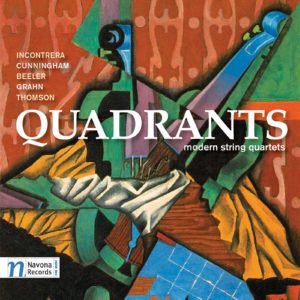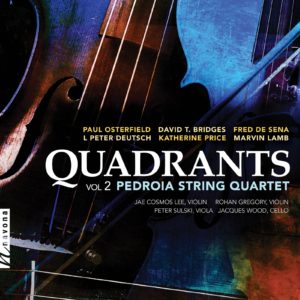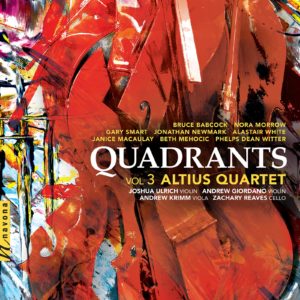Quadrants Vol. 5
Christopher J. Hoh composer
Ferdinando DeSena composer
Christopher Brakel composer
Michael Murray composer
Paul Halley composer
Benda Quartet
Jakub Černohorský violin
Ondřej Pustějovský violin
Petr Benda viola
Tomáš Svozil cello
The award-winning Benda Quartet assembles on QUADRANTS VOL. 5 to deliver a stunning, razor-sharp collection of contemporary string works. Composers Christopher J. Hoh, Ferdinando DeSena, Christopher Brakel, Michael Murray, and Paul Halley offer a wide range of sounds and emotions in this body of work, ranging from warm, elegant expressions to high-octane passages and more.
This Navona Records release is also available as a visual album, filmed at the historic Dul Michal mine in Ostrava, CZ. Eloquent, precise, and hypnotic, QUADRANTS VOL. 5 is a crystal-clear reflection of the musical and technical heights of the string quartet genre.
Listen
Stream/Buy
Choose your platform
Track Listing & Credits
| # | Title | Composer | Performer | |
|---|---|---|---|---|
| 01 | Let Tyrants Shake: I. Chester | Christopher J. Hoh | Benda Quartet | Jakub Černohorský, violin; Ondřej Pustějovský, violin; Petr Benda, viola; Tomáš Svozil, cello | 0:39 |
| 02 | Let Tyrants Shake: II. Elegy | Christopher J. Hoh | Benda Quartet | Jakub Černohorský, violin; Ondřej Pustějovský, violin; Petr Benda, viola; Tomáš Svozil, cello | 3:11 |
| 03 | Let Tyrants Shake: III. Blessings | Christopher J. Hoh | Benda Quartet | Jakub Černohorský, violin; Ondřej Pustějovský, violin; Petr Benda, viola; Tomáš Svozil, cello | 2:49 |
| 04 | Let Tyrants Shake: IV. Divinity | Christopher J. Hoh | Benda Quartet | Jakub Černohorský, violin; Ondřej Pustějovský, violin; Petr Benda, viola; Tomáš Svozil, cello | 3:26 |
| 05 | Let Tyrants Shake: V. Action | Christopher J. Hoh | Benda Quartet | Jakub Černohorský, violin; Ondřej Pustějovský, violin; Petr Benda, viola; Tomáš Svozil, cello | 2:57 |
| 06 | String Quartet No. 2: I. Integrity | Ferdinando DeSena | Benda Quartet | Jakub Černohorský, violin; Ondřej Pustějovský, violin; Petr Benda, viola; Tomáš Svozil, cello | 3:30 |
| 07 | String Quartet No. 2: II. Humility | Ferdinando DeSena | Benda Quartet | Jakub Černohorský, violin; Ondřej Pustějovský, violin; Petr Benda, viola; Tomáš Svozil, cello | 4:17 |
| 08 | String Quartet No. 2: III. Perseverance | Ferdinando DeSena | Benda Quartet | Jakub Černohorský, violin; Ondřej Pustějovský, violin; Petr Benda, viola; Tomáš Svozil, cello | 5:07 |
| 09 | Word-Shadows | Christopher Brakel | Benda Quartet | Jakub Černohorský, violin; Petr Benda, viola; Tomáš Svozil, cello | 7:13 |
| 10 | The Darkening Green | Michael Murray | Benda Quartet | Jakub Černohorský, violin; Ondřej Pustějovský, violin; Petr Benda, viola; Tomáš Svozil, cello | 7:42 |
| 11 | String Quartet No. 2: I. Winter | Paul Halley | Benda Quartet | Jakub Černohorský, violin; Ondřej Pustějovský, violin; Petr Benda, viola; Tomáš Svozil, cello | 7:25 |
| 12 | String Quartet No. 2: II. Midnight | Paul Halley | Benda Quartet | Jakub Černohorský, violin; Ondřej Pustějovský, violin; Petr Benda, viola; Tomáš Svozil, cello | 12:01 |
| 13 | String Quartet No. 2: III. Allegro | Paul Halley | Benda Quartet | Jakub Černohorský, violin; Ondřej Pustějovský, violin; Petr Benda, viola; Tomáš Svozil, cello | 11:59 |
Recorded December 9, 2022, January 2, 10-12 & February 2, 24, 2023 at Czech radio Ostrava in Ostrava, Czech Republic
Recording Session Producer Jan Košulič
Recording Session Engineer Aleš Dvořák, Pavel Kunčar (Track 9)
Editing Jan Košulič
Additional Editing and Mixing Melanie Montgomery (Tracks 1-8, 10-13)
Additional Editing Lucas Paquette (Track 9)
Mastering Melanie Montgomery
Executive Producer Bob Lord
VP of A&R Brandon MacNeil
A&R Danielle Sullivan, Chris Robinson
VP of Production Jan Košulič
Audio Director Lucas Paquette
Production Manager Martina Watzková
Production Assistant Adam Lysák
VP, Design & Marketing Brett Picknell
Art Director Ryan Harrison
Design Edward A. Fleming
Publicity Kacie Brown
Digital Marketing Manager Brett Iannucci
Artist Information
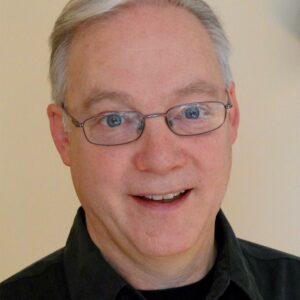
Christopher J. Hoh
“Full of charm and shapely allure” (Opera News) and “a tapestry of immense grace” (Textura) are some of the praises Christopher J. Hoh has received for his music. He grew up in Reading PA and was influenced as a young singer and accompanist by great works under conductors in Pennsylvania, New York, and Washington. He has been in Alice Parker’s composer seminar as well as workshops with Jean Berger, Daniel Moe, Robert Page, and Craig Jessop.
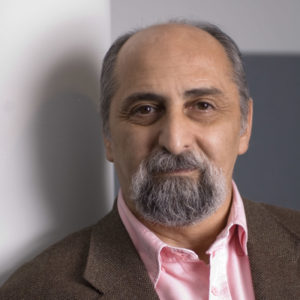
Ferdinando DeSena
Ferdinando DeSena is a Miami-based composer who was born in Brooklyn NY. His earliest musical experiences were with neighborhood pop, and doo–wop groups. He worked as musician in Ithaca NY for 13 years, playing in several regional bands as keyboard player and lead singer. His final group was Uptown Revue, which he led for seven years

Christopher Brakel
Christopher Brakel (b. 1977) is a Boston-based composer of acoustic and electroacoustic concert music, an educator/arts advocate, a music copyist/engraver, and a technology consultant. To date, his concert works have been commissioned and performed across the United States, in Canada, Colombia, the Czech Republic, France, Germany, and Italy. These performances have included prominent regional, national, and international festivals, conferences, and concerts, including the L.A. Composers Project, Darmstädter Ferienkurse, SEAMUS, and SCI National Conferences, FSU Festival of New Music, June in Buffalo, Midwest Composers Symposium, and the Czech-American Summer Music Institute.
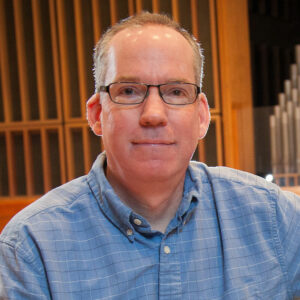
Michael Murray
Michael Murray has been described as "a contemporary craftsman-artist of original stripe" whose music is "easy to listen to in the best possible way." His compositions cover a wide variety of styles and media, but his gift for lyricism is particularly well suited to music for strings and the human voice. In addition to composing concert music, he has written music for film, theater productions, dance, and visual arts installations. His music appears on Navona and Ansonica Records, and is published by Ars Nova Press. He lives in Springfield MO where he is Professor of Music at Missouri State University.

Paul Halley
Paul Halley is one of Australia’s most popular composers of classical music, blending elements of traditional classical styles with a distinctive modern edge. Drawing on influences from the classical masters such as Beethoven, Bach and Mozart, Halley also draws inspiration from sources as varied as medieval music and film music. With his beautifully melodic and intensely dramatic music he has captivated audiences and made a reputation for himself as a composer of highly accessible contemporary classical music.
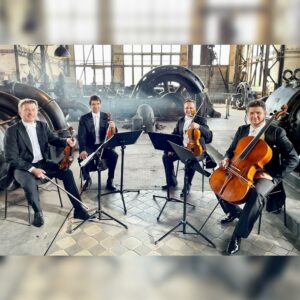
Benda Quartet
Since the Benda Quartet began performing in 2012 they have achieved a wide variety of musical successes and established themselves among highly respected Czech ensembles. Their first significant landmark was the concert debut they performed at the 60th Jubilee of the Janacek Philharmonic Orchestra in Ostrava in April 2014. The concert was recorded by Czech Radio and garnered a huge audience acclaim. Since then has the collaboration with the studio of Czech Radio continued on regular basis and resulted in a number of publicly appreciated recordings. The Benda Quartet have worked intensively together with the Janáček Philharmonic Orchestra and artist management agency Janáčkův Máj on numerous chamber music and educational projects.



